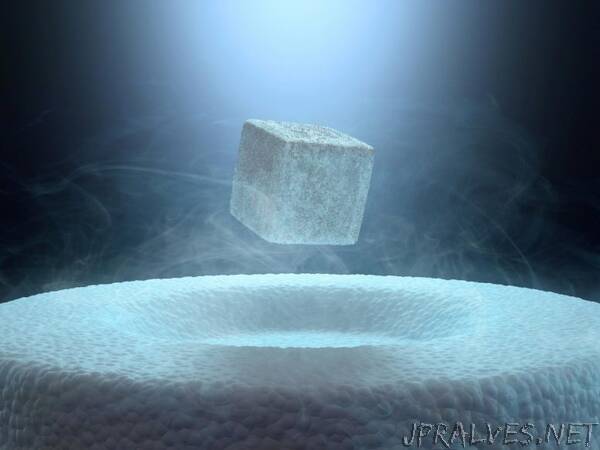
“Research led by Kent and the STFC Rutherford Appleton Laboratory has resulted in the discovery of a new rare topological superconductor, LaPt3P. This discovery may be of huge importance to the future operations of quantum computers.
Superconductors are vital materials able to conduct electricity without any resistance when cooled below a certain temperature, making them highly desirable in a society needing to reduce its energy consumption.
They manifest quantum properties on the scale of everyday objects, making them highly attractive candidates for building computers that use quantum physics to store data and perform computing operations, and can vastly outperform even the best supercomputers in certain tasks. As a result, there is an increasing demand from leading tech companies like Google, IBM and Microsoft to make quantum computers on an industrial scale using superconductors.
However, the elementary units of quantum computers (qubits) are extremely sensitive and lose their quantum properties due to electromagnetic fields, heat, and collisions with air molecules. Protection from these can be achieved by making more resilient qubits using a special class of superconductors called topological superconductors which in addition to being superconductors also host protected metallic states on their boundaries or surfaces.
Topological superconductors, such as LaPt3P, newly discovered through muon spin relaxation experiments and extensive theoretical analysis, are exceptionally rare and are of tremendous value to the future industry of quantum computing.
To ensure its properties are sample and instrument independent, two different sets of samples were prepared in the University of Warwick and in ETH Zurich. Muon experiments were then performed in two different types of muon facilities: in the ISIS Pulsed Neutron and Muon Source in the STFC Rutherford Appleton Laboratory and in PSI, Switzerland.
Dr. Sudeep Kumar Ghosh, Leverhulme Early Career Fellow at Kent’s School of Physical Sciences and Principle Investigator said: ‘This discovery of the topological superconductor LaPt3P has tremendous potential in the field of quantum computing. Discovery of such a rare and desired component demonstrates the importance of muon research for the everyday world around us.’
Reference: “Chiral singlet superconductivity in the weakly correlated metal LaPt3P” by P. K. Biswas, S. K. Ghosh, J. Z. Zhao, D. A. Mayoh, N. D. Zhigadlo, Xiaofeng Xu, C. Baines, A. D. Hillier, G. Balakrishnan and M. R. Lees, 4 May 2021, Nature Communications.
DOI: 10.1038/s41467-021-22807-8
The paper is published in Nature Communications (University of Kent: Dr. Sudeep K. Ghosh; STFC Rutherford Appleton Laboratory: Dr. Pabitra K. Biswas, Dr. Adrian D. Hillier; University of Warwick – Dr. Geetha Balakrishnan, Dr. Martin R. Lees, Dr. Daniel A. Mayoh; Paul Scherrer Institute: Dr. Charles Baines; Zhejiang University of Technology: Dr. Xiaofeng Xu; ETH Zurich: Dr. Nikolai D. Zhigadlo; Southwest University of Science and Technology: Dr. Jianzhou Zhao).”
